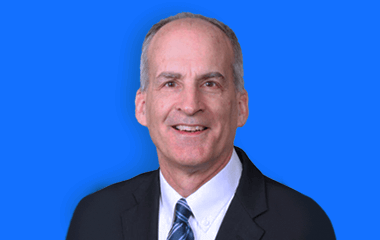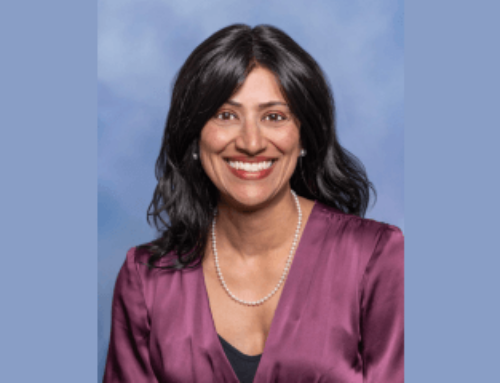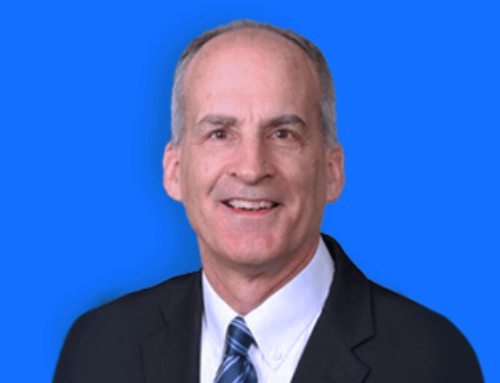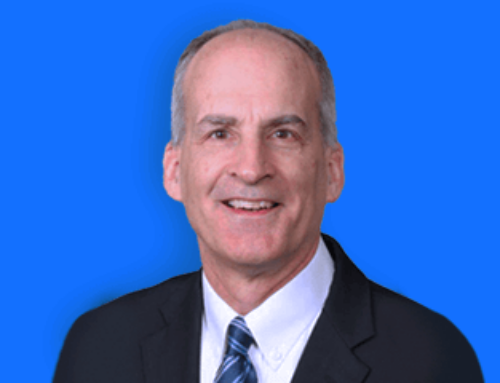Eric J. Olson, MD, completed his term as president of the American Academy of Sleep Medicine (AASM) board of directors on Monday, June 9, 2025, during the AASM annual membership meeting, which took place in Seattle as part of the SLEEP 2025 annual meeting of the Associated Professional Sleep Societies (APSS).
This is an excerpt of the remarks that he presented during the membership meeting.
Remarks by Dr. Eric J. Olson
Now, it is truly an honor to present the report of the Academy president. Serving as your president this past year has been a privilege, and I’m proud of what we have accomplished together. We have worked with purpose and focus, advancing our shared mission at a pivotal time for sleep medicine.
I’d like to highlight several key initiatives that are helping to shape a strong future for our field.
We conducted the 2024 AASM Sleep Medicine Compensation Survey. It is the largest national survey of its kind and includes benchmarking data for physicians, advanced practice providers, and sleep technologists across a variety of practice settings. These insights can support contract negotiations, workforce planning, and operational decision-making. The executive summary is available now as a free member benefit, and the full report can be purchased through our online shop.
Advocacy for the sleep field
Advocacy remained central to our work this year. We focused on improving reimbursement, expanding access to care, and raising awareness that sleep is essential to health. In March, Academy members participated in Hill Day, meeting with 28 congressional offices. We advocated for permanent standard time, prior authorization reform, and continued telehealth coverage. We also hosted a congressional briefing on sleep and women’s health, highlighting disparities and opportunities for action.
In the context of recent changes in federal funding, staffing, and administrative requirements related to biomedical research and health care, the Academy issued a statement advocating for robust federal investments in sleep and circadian research and clinical sleep medicine. We urged the White House, Congress, and federal agency leaders to prioritize sleep through programs administered by agencies including NIH, CMS, and the VA.
Our membership includes NIH-funded researchers and VA staff clinicians, many of whom have experienced professional disruptions and uncertainties this year. All our physician members are also affected by the reimbursement rates implemented by CMS through the Medicare physician fee schedule. We remain committed to advocating for federal policies that support our members and promote the health and well-being of patients who have sleep disorders.
Along with other organizations in the sleep community, we also reached out to the members of the Make America Healthy Again Commission. We urged them to recognize the importance of healthy sleep in the commission’s report to the president, which was released in late May. I commend the commission for responding to these efforts by recognizing that our children and teens are experiencing “a nationwide sleep crisis,” and I’m pleased that the report also highlights the importance of morning sunlight and circadian timing for health and well-being.
We partnered with several other sleep organizations to deliver a unified message on the value of healthy sleep. I’m grateful for our collaborative relationship with the Sleep Research Society, National Sleep Foundation, Society of Behavioral Sleep Medicine, and Society for Research on Biological Rhythms. While we appreciate the inclusion of sleep, we are also preparing a response to the commission to address concerning language that devalues adenotonsillectomy for pediatric sleep apnea. As the commission members develop a strategy that will be presented to the president in August, we will continue to reach out to educate them about policy solutions to address relevant issues such as school start times and permanent standard time.
Guidelines and research
We published a new clinical practice guideline that offers evidence-based recommendations for the treatment of restless legs syndrome and periodic limb movement disorder. This spring, two additional guidelines were posted for public comment. They address the management of sleep-disordered breathing in inpatients and the treatment of central sleep apnea. These documents are being finalized and will provide critical guidance for clinicians, reflecting our commitment to high-quality, patient-centered care.
In January, Safwan Badr succeeded Nancy Collop as editor-in-chief of the Journal of Clinical Sleep Medicine. I am grateful for Nancy’s decade of service in this role, and I appreciate the foundational work of her predecessor, Stuart Quan. Now, I am excited to see Safwan continue to elevate the journal as a premier publication for human sleep and circadian science. To further the journal’s impact, we have entered into a publishing services agreement with Springer Nature, which will begin publishing JCSM in January. As a global leader in research publishing, Springer will help us expand the journal’s impact, while Safwan and his editorial board will continue to select the best science for publication.
As a member of the Academy, you will continue to receive full access to JCSM as a benefit of your membership. You can also contribute to JCSM by volunteering as a manuscript reviewer. I know Safwan would love to send you some papers to review!
New guidance for members
The FDA’s recent approval of tirzepatide for adults with obesity and moderate to severe OSA marks a significant milestone. It is the first pharmacologic treatment approved for OSA, and it has the potential to shift clinical care. In response, the Academy held educational webinars and collaborated with the Obesity Medicine Association, and we recently formed a task force led by Tim Morgenthaler. This group will develop resources to help our members integrate obesity management in their sleep practice. As we navigate this changing landscape, we will support our members with practical guidance and best practices.
We formed a new Practice Management Presidential Committee, led by Sam Fleishman. Focusing on our strategic goal of “Practice Success,” this group is improving our practice management resources for members. Their work includes developing the outline for a book on practice management and providing recommendations to improve our Practice Management Course and other education offerings.
We formed a Women’s Sleep Health Task Force led by Suzie Bertisch, and they are identifying the gaps and opportunities in sleep care for women across the lifespan. Their work will inform future research priorities, clinical recommendations, and advocacy efforts. We know that women face unique challenges in receiving timely and accurate diagnoses for sleep disorders, and we are committed to addressing these disparities.
Strategic initiatives
Expanding the sleep physician pipeline remained a priority for us. We continued our Advancing Innovation in Residency Education program, which is piloting blended and part-time fellowship training models. Our Sleep Medicine Fellowship Director’s Council continued to equip program directors and fellows, and we continued to support the Sleep Medicine Match conducted by the National Resident Matching Program Specialties Matching Service. Last December, a record number of 207 physicians successfully matched with a sleep medicine fellowship training program. Many of these young physicians were here in Seattle this weekend to participate in our fellowship training bootcamp.
We continued an initiative led by Kannan Ramar to re-envision adult OSA characterization, which has always relied heavily on the apnea-hypopnea index. While useful, AHI alone does not capture the full complexity of the disorder or the range of clinical presentations we see in practice. This initiative aims to develop a more comprehensive framework for defining and describing OSA, with implications for diagnosis, treatment, and research. It is a bold step forward that will shape the future of our specialty.
Working with an outside consultant and led by an expert panel of members, we finalized and validated the Patient-reported Longitudinal Assessment Tool for OSA – which we call PLATO. The manuscript has been submitted for publication in JCSM, and the questionnaire will be available – in English and Spanish – through an online platform. I am pleased to report that clinicians and researchers will be able to download and use the questionnaire for free. It has taken years to develop this valuable tool, and I am grateful for the hard work of Doug Kirsch, Fariha Abbasi-Feinberg, Charles Davies, Charlene Gamaldo, and Carol Rosen.
One of our most important initiatives was the development of a code change application to update the codes for unattended sleep studies, which we submitted to the American Medical Association CPT Editorial Panel. The current code family no longer captures all existing sleep testing technologies that are being used outside of the sleep center to diagnose sleep disorders. These newer sleep testing devices have varying levels of complexity and channels, and they now measure sleep parameters using both direct and derived measures of sleep. In addition to capturing newer technologies, the updated code family is no longer limited to testing exclusively for sleep apnea; it now captures testing for multiple sleep disorders. Our proposed code set addresses this complexity and reflects our commitment to ensure fair reimbursement for sleep testing services.
Our proposed codes were approved by the CPT Editorial Panel, and then a random sample of members from multiple societies participated in a survey by the AMA Relative Value Scale Update Committee. The RUC reviewed these survey results in April and approved the recommendations for practice expense and professional services. The RUC sent these recommendations to CMS for potential implementation in January 2027.
I am so thankful for the diligent work of our CPT advisors Larry Epstein and Vik Jain, our RUC advisors Chuck Bae and Jeremy Weingarten, board liaison Fariha Abbasi-Feinberg, and health policy staff Diedra Gray and Tracy Bunge. We also worked with several organizations on this initiative, including CHEST, the American Thoracic Society, and the American Academy of Neurology. This has truly been a team effort.
APSS partnership
Coming here to the SLEEP meeting is always one of the highlights of my year. Nearly 40 years ago, the Academy and the Sleep Research Society formed the Associated Professional Sleep Societies. Each year, we have worked together to organize the premier sleep and circadian conference in the world. Our two organizations have distinct differences, and our members have unique needs. So, it can be challenging to plan a meeting that satisfies the leaders and members of both organizations.
We invested a lot of time this year in negotiations with the SRS regarding the future of the APSS operating agreement. I am pleased to report that we eventually found common ground and agreed to continue this important partnership. I’m especially thankful for SRS President Dan Buysse and SRS Secretary/Treasurer Stephanie Crowley, who joined me and Anita in lengthy discussions that advanced our negotiations. I have great respect for our colleagues at the SRS, and I am excited that the Academy and the SRS will continue to host this fantastic annual meeting together.
Closing remarks
Throughout all of this work, our members have remained the heart of the Academy. Your expertise, passion, service, and support have made these achievements possible. We also have talented and dedicated staff in our national office, and we are led by a board of directors that always puts the needs of our members first. It is a privilege and an honor to work alongside them. I’m also grateful for the love and support of my wife, Lisa; daughter, Sarah; and son, Carl. I could not have done this without them.
Serving as your president has been one of the greatest honors of my career. I am proud of what we have accomplished together, and I’m confident that the Academy’s future is bright. I look forward to supporting Anita Shelgikar as she leads us in the year ahead. Thank you for the opportunity to serve.




